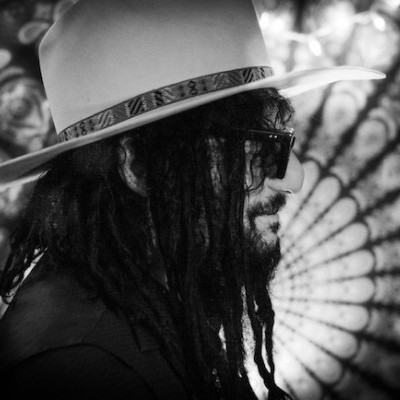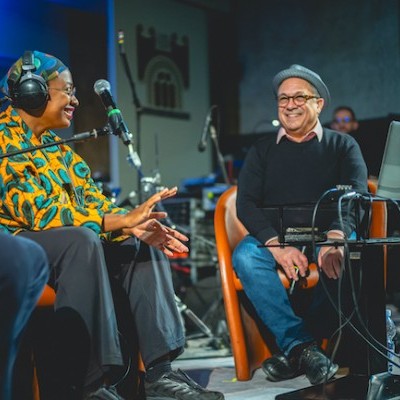Jul 9, 2024 11:35 AM
Trumpeter, Educator Jim Rotondi Dies at 61
Jim Rotondi, a renowned hard-bop trumpeter, composer and educator, died suddenly on July 7 at a hospital in France. He…

Xhosa Cole Quartet
(Photo: Ian Davies)With the release of his debut album, 2021’s acclaimed K(no)w Them, K(no)w Us (Stoney Lane Records), the then-24-year-old tenor saxophone sensation Xhosa Cole projected the decided cool of a new young lion on the U.K. jazz scene. From his retro-looking pinstripe suit to his confidently swinging renditions of Woody Shaw’s “Zoltan,” Ornette Coleman’s “Blues Connotation,” Thelonious Monk’s “Played Twice,” Lee Morgan’s “Untitled Boogaloo” and Tadd Dameron’s “On A Misty Night,” K(no)w Them, K(no)w Us heralded the arrival of an artist with potent chops who was clearly part of the swinging post-bop continuum. But a closer look revealed a subtle hint of something that belied the standard young lion: Cole was sporting royal blue nail polish matching his blue pinstripe suit.
With the release of his followup album, Ibeji (Stoney Lane), the Birmingham-born musician is not only presenting an entirely different look — blue lipstick, blue eye makeup and white face paint — he is also delving into an entirely different musical bag. “The makeup was really a nod to Afrofuturism,” said the 26-year-old saxophonist, who identifies as a queer Black jazz musician. “It was a way of also expressing a queer identity within the Black space, researching and exploring some Grace Jones examples of other forms of Afrofuturism that have permeated popular culture. This is something that might be in the cards moving forward for recordings to come.”
Ibeji, which features Cole engaging in duets with seven percussionists from across the African diaspora, addresses some deep ethnomusicological/sociological issues through various spoken-word testimonies that explore themes of duality, rituals, ancestors, masks, codes and brotherhood. In effect, Cole comes across as more griot than young lion.
“The first album was an acknowledgement of the direct lineage from which my musical identity comes,” he explained. “And a lot of my schooling as a musician and as an improviser has come through the school of bebop music of the African-American community of the 1930s onwards. However, a big part of my musical development has been working with a big breadth of musical forms and structures, lineages and traditions, and I’ve been very fortunate to connect a big range of really inspiring musicians who are really pushing and excelling their idiom of music.
“A lot of these connections have been me searching for and finding my musical identity within Black music, the music of African descendants from all parts of the globe,” he continued. “And so, on the second album I wanted to explore the different threads of my musical path and the different elements that made me the musician that I am. And I wanted to frame my musical identity within different structures, so that people could appreciate the continuum and the thread that links all of the different styles of playing that I’m lucky and humbled to be engaged in.”
Over the course of Ibeji’s 16 tracks, Cole connects the dots between West Africa and clave/rumba/second line/blues and even such pivotal figures in jazz as Louis Armstrong and Charlie Parker, while also addressing the harsh realities of slavery, Jim Crow and lynchings.
“We cover a lot of topics within the record,” he said. “Among the seven percussionists, we have a very wide breadth and outlook on different themes and elements that unite the experience of people of African descent. And in terms of the mentors in my life, several of them are represented on this record, including one of my first teachers in the arts, Ian Parmel. So I have these mentors and teachers who are always guiding me into alignment with these traditions and with these foundations that make up the Black experience.”
Cole’s brother Azizi appears on two tracks, “CDC” and “All Roads.” “As this project explores the theme of brotherhood, it felt appropriate to collaborate with my brother Azizi, who is a world-class percussionist and composer,” Cole said. “We share a common language which manifests in our collaborations. We obviously have a lot of shared influences growing up in the very culturally rich environment of Handsworth in Birmingham. Our experiences from childhood, listening to music together and playing music together in different ensembles, are priceless.”
Another key presence on Ibeji is percussionist Lekan Babaloa, who provides compelling testimony on five pieces. “Lekan has been a big influence and has had a significant impact on me and my conception of rhythm and my understanding of the roots of rhythm of these diasporic rhythms,” Cole said. “Speaking to and interacting with a master percussionist like him has been a very eye-opening experience and a vital part of my development.”
Cole is also quick to point out the contributions of in-demand New York drummer Jason Brown, who alongside the saxophonist conjures up some ferocious Elvin Jones/John Coltrane energy on the swinging sax-drums face-offs “Native Tongue” and “Andy’s Shuffle.” “Jason was my first direct exposure to an African-American perspective on jazz music,” Cole noted.
While some pieces on Ibeji may harken back to his African ancestors, others push the envelope on Afrofuturism. For Cole, it’s all different parts of the same tree that represents the African diaspora. “And one big branch of that tree that I’ve been heavily involved in is that of jazz music, bebop and the music of the great forefathers and foremothers of that music — Louis Armstrong, Charlie Parker, Sonny Rollins, John Coltrane, Lester Young … the list goes on.” DB

Jim Rotondi was acclaimed for his wide, round trumpet tone, remarkable virtuosity and assured swing.
Jul 9, 2024 11:35 AM
Jim Rotondi, a renowned hard-bop trumpeter, composer and educator, died suddenly on July 7 at a hospital in France. He…

Charles Lloyd, seen here at the 2024 New Orleans Jazz & Heritage Festival, makes DownBeat Poll history!
Jul 11, 2024 12:23 PM
The incomparable Charles Lloyd swept the 72nd Annual DownBeat Critics Poll, becoming the first artist ever to earn…

“Being president of Blue Note has been one of the coolest things that ever happened to me,” Was said. “It’s a gas to serve as one of the caretakers of that legacy.”
Jun 4, 2024 12:21 PM
Sitting with Don Was is a comfortable and unhurried exercise. He may seem slightly reserved at first, but ideas and…

“She reminds me of my childhood and makes we want to cry,” Cécile McLorin Salvant, pictured here with writer Ashley Kahn, said of Dianne Reeves.
Jun 11, 2024 12:31 PM
Italy’s Umbria Jazz Winter is one of those rare annual festivals that not only coincides with a major holiday —…

Maria Schneider said of Decades, her new compilation release: “I just wanted to create something, put it in a beautiful box and say, ‘Look at what we did.‘”
Jun 18, 2024 12:00 PM
Maria Schneider opened the sleek black box and placed it on a coffee table in her Manhattan apartment. Inside lay the…